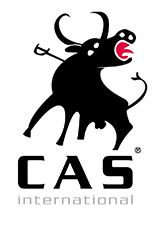Forgotten females of the bullfighting sector: the cow
15-07-2021
© Santuario Vegan
When people hear the word ‘bullfighting’, they think of imposing bulls that undergo an unchosen torture. This is not so strange: after all, the word starts with ‘bull’. The term ‘bull festival’ also evokes the same male association. This is not justified, however, because the cow plays a crucial role in the bullfighting industry as well. An invisible role, that is. Cows are nothing less than the forgotten females of bullfighting.
Bullfighting
In the street festivals, cows are exploited just as much as bulls. They are often used as objects of entertainment for a frenzied crowd that harasses and chases the females. In many Spanish towns, ‘vaquillas’ are held during larger festivals where other cruel events with animals – such as bullfighting – take place. The vaquillas usually take place in a bullring or enclosed square. The animals are not supposed to get hurt, but we do see people touching them: for example, pulling their tails and ears. For the cows, this is a stressful experience as they have nowhere to escape to.
After the vaquilla, the misery may not be over yet: depending on the legislation of the autonomous region, the females are used again and again in similar festivals, until they collapse from exhaustion. After this, the slaughterhouse awaits them.

A Vaquilla in Pamplona @ CAS International
Selection process
In preparation of the bullfights, bulls and cows between two and three years old are tested for their temper and ferocity in the so-called ‘tientas’. There are different types of tientas: in one of the tests, a horseman stabs the cows and bulls with a long lance to provoke a reaction. This is how they determine which animals are suitable for bullfighting, bull festivals or breeding.
After the tienta, there are several scenarios in store for the cows. In most cases they go straight to the slaughterhouse. The farmer gathers as many rejected cows as possible to have them slaughtered at the same time to keep the costs down. These cows are injured after the tienta and do not receive any veterinary treatment. Sometimes they even have to wait for days before being transported to the slaughterhouse. An agony. Several vets have reported cows with large, infected wounds after such a test.
When a cow passes the test, she has three possible destinations: the breeding farm, the bullfights and cruel festivals, and the bullfighting schools, where she serves as training material for future bullfighters.
Forgotten mothers
The animals that remain most invisible are the cows that provide offspring outside the public eye. The bullfighting industry would not earn a penny without these forgotten mothers. We actually know very little about their lives. What is certain is that when they are no longer able to provide for new generations of fighting animals, the slaughterhouse awaits them.

A bullfight @ Pixabay
Ruth, Tina and Margarita
Several rescue centres in Spain save all kinds of animals that would otherwise be exploited. This includes bulls and cows from the bullfighting industry. CAS International works together with some rescue centres where it is possible for you to adopt a bull or cow. Today we put our three cows from these adoptions in the spotlight!
Ruth, Tina and Margarita were born in the bullfighting industry and are daughters of the invisible mothers described above. By telling their stories we take them out of the anonymity.
For example, Margarita was taken away from her mother as a young calf and given to a friend of the breeder. There she lived all alone, without any interaction with other cattle. Sometimes she was visited by neighbours who loved her soft, sweet character. They gave her the name ‘sweet Margarita’. But another neighbour didn’t like her at all: he filed a complaint against Margarita’s owner. The state government of Catalonia then wanted her to be killed because of a law that applied to animals intended for meat and milk production. El Hogar Animal Sanctuary took up the case and Margarita was saved from death.
Ruth, too, was taken from her mother as a young calf. Together with her brother Manuel, she was saved by Santuario Vegan, near Madrid. It is very likely that Ruth would otherwise have been used in cruel fiestas with bulls.
A similar fate awaited Tina. When she was only a few months old, she was used in illegal ‘capeas’. Capeas are bullfights with bulls and cows younger than three years old. Tina was lucky not to be killed but she suffered severe trauma. They had beaten her so badly that half her teeth were missing. When she was seven months old, she was rescued by Santuario GAIA in Catalonia. She had become terrified of people. Little by little she regained her confidence, thanks to bull Samuel, who helped her on her way. Tina is still afraid of people, but luckily there are moments when she lets herself be petted by the shelter staff.
Help the forgotten females of the bullfighting industry: adopt a bull or a cow. Don’t want to adopt now? You can also make a one-time donation or become a donor of CAS.









